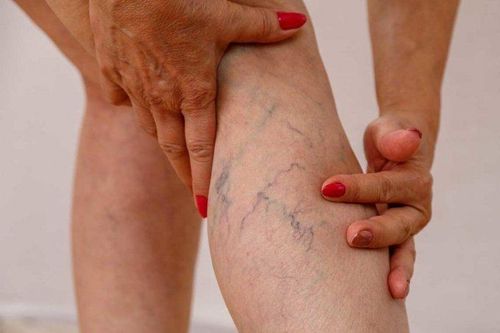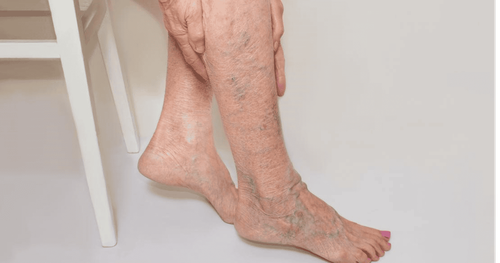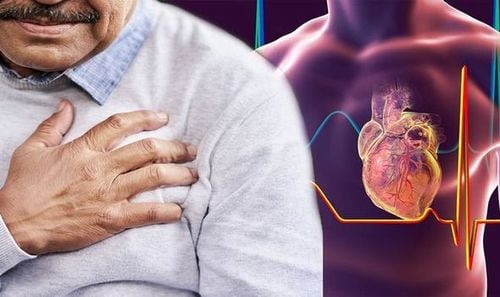This is an automatically translated article.
The article is professionally consulted by Doctor Trinh Le Hong Minh - Radiologist - Radiology Department - Vinmec Central Park International General Hospital.
The advent of vascular ultrasound technology is a great step forward for the medical field, it has great significance in diagnosing diseases related to blood vessels.
1. What is lower extremity vascular ultrasound technique?
Ultrasound (also known as Sonography) is a modern technique that uses ultrasound waves to create images of tissues and organs inside the body. Today, this technique is more and more widely used and has certain applications in the diagnosis of many different diseases of the body.The advent of vascular ultrasound has marked the great development of medical technology. Ultrasound has replaced angiography and other vascular investigations that were previously used by hospitals. Vascular ultrasound of the lower extremities is used to support the diagnosis of diseases of the arteries and veins of the lower extremities.
2. Advantages of lower extremity vascular ultrasound technique
As mentioned, lower extremity vascular ultrasound is an invention of great significance for the detection of pathologies, because it has outstanding advantages:Observing blood vessels and detecting lesions in a timely manner. relatively accurate, especially color ultrasound. The method is easy to implement, quick to operate in only 20-30 minutes. No pain or discomfort to the patient. Ultrasonic waves are absolutely safe and do not cause harm to health. The cost is significantly saved compared to some other techniques.
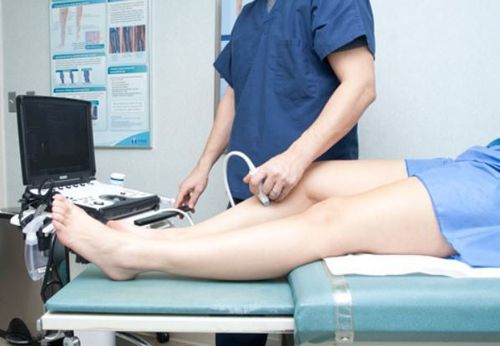
Siêu âm mạch chi dưới không đem lại cảm giác đau đớn cho người bệnh
3. When to go for an ultrasound of the lower extremities?
When having the following signs, the patient is indicated for lower extremity vascular ultrasound:Episodic pain: is the most common symptom, pain due to ischemia repeats. The cause is mainly due to insufficient blood supply, usually pain with exertion to walk and reduce when the patient rests. Pain at rest: is a condition of severe anemia that leads to foot wounds that are difficult to heal, can ulcerate and lead to gangrene. Acute limb ischemia: due to thrombosis, threatening lower extremity muscles. Manifestations are pain, paralysis, loss of sensation, cyanosis and no pulse. The ratio of systolic blood pressure measured between the ankle and the arm varies greatly. The patient has varicose veins and signs of suspected venous thrombosis. Patients with injuries, malignancies, obesity, swollen feet...
4. Ultrasound of the lower extremities will help detect what diseases?
Diseases related to blood vessels are dangerous diseases, especially diseases affecting the arteries and veins of the lower extremities. Therefore, when you have the above-mentioned signs when doing ultrasound, it will help detect the following diseases:Detect and evaluate the degree of narrowing of the arteries of the lower extremities. Narrowing of the arteries is mainly caused by atherosclerosis. Assess the degree of stenosis by assessing the thickness and width of the atherosclerotic plaques, assessing the blood flow in the arterial lumen at the stenosis site, before and after the stenosis. Diagnosis of venous thromboembolism. This is a dangerous disease that can cause many complications, the most dangerous complication of deep vein thrombosis is pulmonary embolism. Early detection of venous insufficiency syndrome. Ultrasound can detect venous backflow, which is the cause of pain, cramps, muscle fatigue and eventually leads to venous failure in patients. In addition, lower extremity vascular ultrasound is also used to monitor the postoperative recovery in some patients with trauma and diseases related to the arteries and veins of the lower extremities. Therefore, when going to ultrasound early, diseases will be detected and treated promptly, avoiding disease development, which is life-threatening.
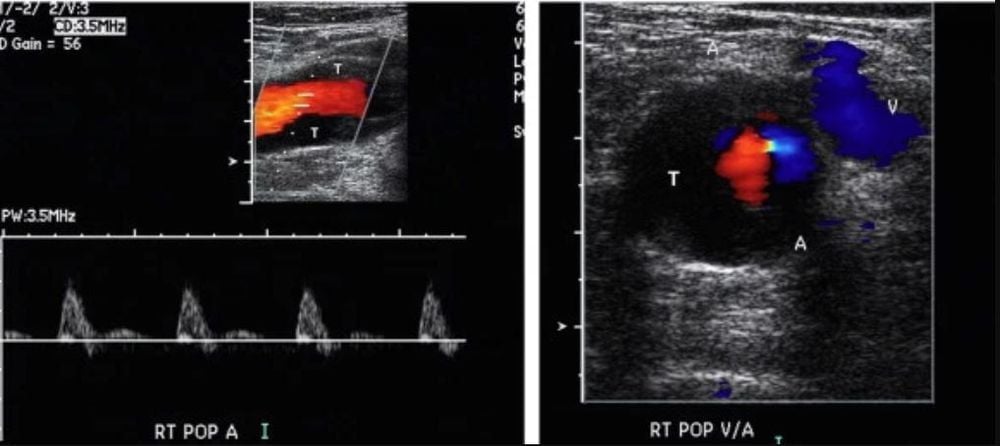
Hình ảnh kết quả siêu âm mạch chi dưới
5. Lower extremity vascular ultrasound procedure
The vessels of the lower extremities are divided into two types: arteries and veins.Techniques used: B-mode ultrasound, color doppler ultrasound, pulse dopper. The ultrasonic frequency used is 5 MHz.
Patient position: lying, sitting, standing; depending on the doctor. Survey procedure: Survey from the femoral level: including the common femoral artery, the deep femoral artery, the proximal and distal superficial femoral segments, the popliteal layer: the popliteal artery, the lower leg level: including the anterior tibial artery, the peroneal artery and posterior tibial artery. Conduct a probe scan on the location of the arteries that need ultrasound and observe the images displayed on the screen to detect lesions and pathologies in the arteries of the lower extremities. 5.1 Lower extremity vein ultrasound Ultrasound lower extremity vein ultrasound includes:
Deep veins
Deep veins include: iliac vein, femoral vein, popliteal vein, anterior tibial vein, posterior tibial vein and vein mark. The patient position and ultrasound probe scanning position are similar to those of lower extremity artery ultrasound. Venous ultrasound should be combined with dynamic evaluation tests: transducer compression to ensure no intravascular thrombus, calf muscle squeeze, valsalva maneuver. Superficial veins
Includes: great saphenous vein and small saphenous vein. Techniques used: Ultrasound B - mode evaluates morphology along the path of veins, color doppler ultrasound combined with pulsed doppler and then evaluates the obtained doppler spectrum to evaluate valve function in veins. The kinetic evaluation tests used are similar to those of deep vein ultrasound.
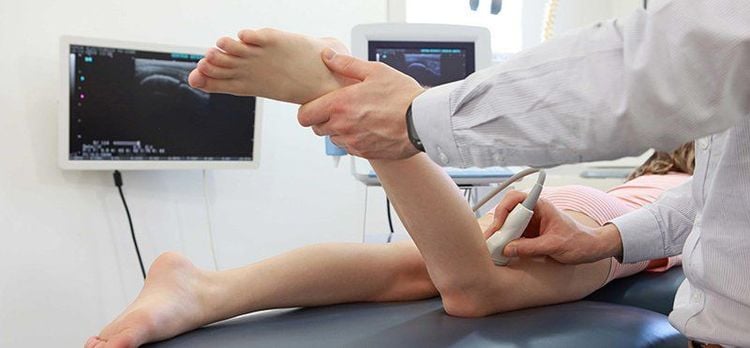
Siêu âm mạch chi dưới cần được thực hiện tại cơ sở y tế có trang thiết bị hiện đại
There are more than 150 oblique veins, most of which are small in size, so it is impossible to survey them all. The technique is performed in the standing position of the patient and at the location of the varicose veins. Lower extremity vascular ultrasound technique is of great significance in detecting lower extremity artery disease. You should choose a reputable medical facility to visit. Vinmec International General Hospital is a high-quality medical facility in Vietnam, equipped with facilities according to 5-star hotel standards, bringing comfort to patients during examination and treatment. The equipment is very modern, imported from the US, Japan, the Netherlands... to help diagnose and treat quickly and effectively. The doctors are all very dedicated, professional, highly qualified, trained from abroad, rich in experience.
Before taking a job at Vinmec Central Park International General Hospital, the position of Doctor of Radiology since February 2018, Doctor Trinh Le Hong Minh used to work as a resident in the Radiology Department at Vinmec Central Park. hospitals: Cho Ray, University of Medicine and Pharmacy, Oncology, People's Gia Dinh, Trung Vuong... from 2012-2015. Officially worked at Cho Ray Hospital from 2015-2016, City International Hospital from 2016-2018.
To register for examination and treatment at Vinmec International General Hospital, you can contact Vinmec Health System nationwide, or register online HERE.






